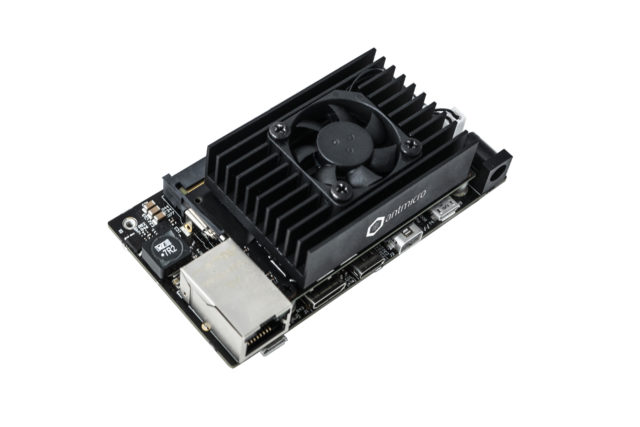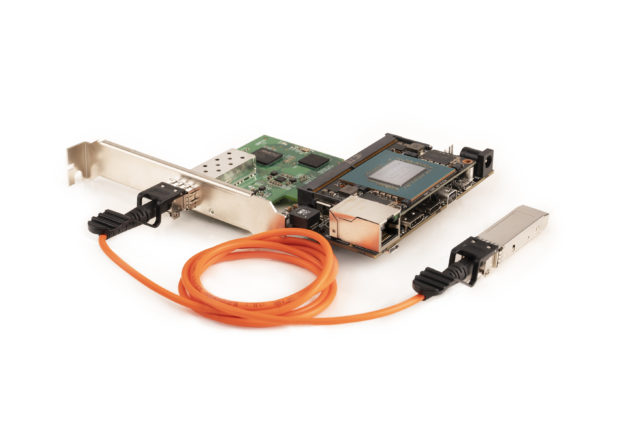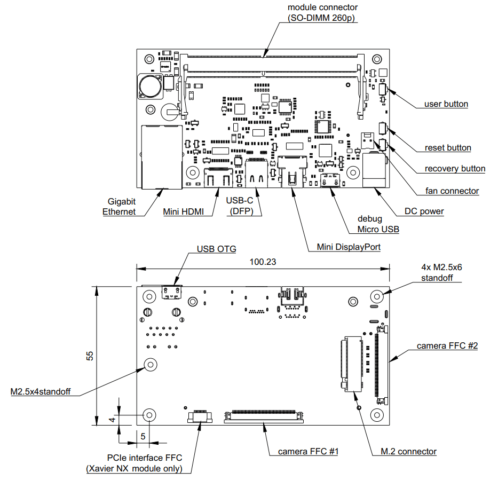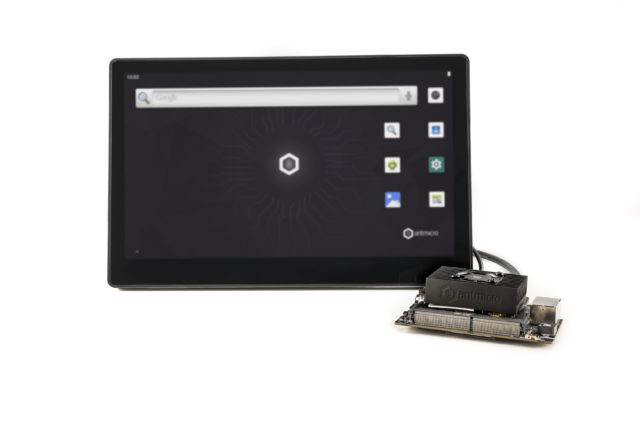When it comes to NVIDIA Jetson family of modules, we should understand that NVIDIA Jetson Nano is for makers and STEM education, while Xavier NX is more geared towards professional and commercial use. The compute module Xavier NX was announced before the development kit, which includes the module and reference carrier board and otherwise for NVIDIA Jetson Nano. There are some third-party carrier boards & edge computers available for Jetson Xavier NX and Jetson Nano, including DesignCore Carrier Board and Diamond FLOYD Carrier Board. Antmicro, a custom hardware, software, and AI engineering company, came up with a compact open hardware device: Jetson Nano/ Xavier NX baseboard. It supports both NVIDIA Jetson Nano SoM as well as the Xavier NX SoM.

The board is designed to put NVIDIA’s versatile module at the heart of cutting-edge projects and drive innovation in areas such as AI/ML, drones, medical and industrial object recognition systems. It can be interfaced with MIPI CSI-2 video devices through a unified Flexible Flat Cable (FFC) connector, supporting up to 4 sensors in a 2-lane configuration or 3 sensors in a 4-lane configuration. The board has been released as open-source and you can build solutions with unmatched flexibility, transparency, and usability.
One of the latest projects that use the baseboard is a “high throughput AI-capable device”. Due to the growing need for ultra-fast internet connections, you can even build a system capable of 10Gb/s. Here is a demonstration of one such implementation.

The demonstration consisted of two NVIDIA Jetson Nano modules, Antmicro’s open-source baseboards, recently upgraded with an M.2 connector, and Asus XG-C100C Network Cards. Due to different form factors on the network cards and the baseboards, they used the M.2 to PCIe adapter card to connect the two components and add a 10 GB Ethernet interface to the baseboard. These high-speed Ethernet connections are crucial for time-sensitive applications.
Jetson Xavier NX Baseboard Specifications
The board comes with a Jetson Nano / Xavier NX module SO-DIMM 260-pin connector. It has a Gigabit Ethernet RJ45 connector for Ethernet networking along with a Micro USB debug connector and USB-C DFP (Host) port. HDMI Mini is intended to be used with portable electronic devices and Mini DisplayPort for connections from your computer to a display.

If the board has a real-time clock, then you can connect to the RTC backup battery to keep the time running when the board is switched off. This battery can keep the RTC running without an external power supply. The baseboard comes with EEPROM for storing board ID/SN.
Getting started
The board can be produced and assembled using the provided design files on GitHub. The board can be powered by a voltage in the 6-36VDC range. It is recommended to use a 12V 2A DC supply to power the board.
The Jetson platform uses Linux (Linux for Tegra, or L4T) as the default OS provided by NVIDIA. Linux is not the only operating system you can work with. For those who are looking to combine the Jetson platform’s AI powers with beautiful and familiar user interfaces, well-known mobile APIs, and standard applications, you can also run Android for the open-source Jetson Nano and Xavier NX baseboard.

You can buy the Jetson Nano/ Xavier NX baseboard from one of Antmicro’s partners for about 300 USD.

Abhishek Jadhav is an engineering student, RISC-V Ambassador, freelance tech writer, and leader of the Open Hardware Developer Community.
Support CNX Software! Donate via cryptocurrencies, become a Patron on Patreon, or purchase goods on Amazon or Aliexpress




